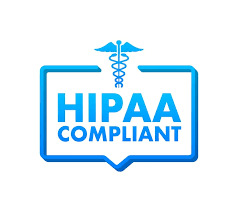Don't wanna be here? Send us removal request.
Text
Why Outsource Your HIPAA Direct Mailing Programs?

Managing HIPAA-compliant direct mail programs in-house can be resource-draining and risky. From data protection to printing logistics, healthcare organizations must balance security, efficiency, and compliance. That’s why many providers, payers, and health IT firms now outsource HIPAA direct mail programs to specialized vendors.
This article dives into the benefits, cost savings, security enhancements, and operational improvements of outsourcing your HIPAA mail needs.
1. Understanding HIPAA Direct Mailing Requirements
HIPAA regulations require healthcare providers to:
Protect PHI at every stage of processing
Limit access to sensitive data
Track and report disclosures
Sign Business Associate Agreements (BAA) with vendors
Outsourcing helps fulfill these requirements with professional-grade systems and infrastructure.
2. Cost-Efficiency of Outsourcing HIPAA Mail
Maintaining in-house print operations requires:
Printers, inserters, folders
Secure servers and firewalls
Mailing software licenses
Trained compliance staff
Outsourcing eliminates capital expenditures and converts them into predictable monthly costs.
Estimated savings:
Outsourcing can reduce costs by 30–60% compared to internal operations, especially when accounting for labor, reprints, and postage discounts.
3. Enhanced Security and Compliance
Outsourced HIPAA mail vendors typically offer:
SSAE-18 or SOC 2 certified facilities
On-premise encryption key management
Data tokenization and role-based access
Employee background checks and security training
This level of security is hard to replicate in-house.
4. Focus on Core Competencies
Healthcare providers should focus on care delivery, not on:
Managing mailroom staff
Auditing paper trails
Troubleshooting printers
Outsourcing lets internal teams refocus on patient engagement and medical outcomes.
5. Consistency and Accuracy in Patient Communications
Reputable vendors offer:
Pre-flight address verification
Barcode tracking of every mailpiece
Duplicate prevention algorithms
Certified mail options for critical documents
This results in fewer returned mails, misdeliveries, or compliance issues.
6. Scalability and Speed
HIPAA mail volumes fluctuate due to:
Seasonal enrollments
Regulatory changes
Patient onboarding spikes
Outsourcing partners can quickly ramp up operations and handle bulk mail seamlessly.
7. Integration with Healthcare Systems
Advanced vendors provide:
API or HL7-based integrations with EMR/EHR systems
Automated data ingestion from patient databases
Trigger-based workflows for instant mail generation
This creates a seamless, real-time print and mail process.
8. Audit Trails and Reporting
HIPAA mail providers log every event in the communication lifecycle:
Who accessed the data?
When was the mail sent?
Was it received or returned?
Robust audit trails are vital during OCR audits and HIPAA investigations.
9. Real-Life Scenario: Dental Chain Case Study
A dental chain outsourced appointment reminders and EOBs. Results included:
$250,000 saved annually
48-hour turnaround time for mailings
100% HIPAA audit success
10. Choosing a HIPAA-Compliant Outsourcing Partner
Look for:
Proven HIPAA and HITECH compliance
Transparent pricing and SLAs
Mail verification systems
Disaster recovery plans
Always request a Business Associate Agreement and sample reports.
Conclusion
Outsourcing your HIPAA direct mail program is a strategic move that improves security, lowers costs, and enhances communication reliability. With the right partner, healthcare organizations can meet regulatory standards while streamlining operations and improving patient experiences.
youtube
SITES WE SUPPORT
Automated HIPAA Mails – Wix
0 notes
Text
HIPAA Compliant Print and Mail Solutions for the Healthcare Industry

In the modern healthcare landscape, protecting patient data is as important as providing top-tier medical care. The Health Insurance Portability and Accountability Act (HIPAA) mandates strict standards for safeguarding Protected Health Information (PHI). This regulation extends to all communication—including print and mail. That’s why HIPAA compliant print and mail solutions are vital for healthcare providers, insurers, pharmacies, and medical billing companies.
This article explores how HIPAA-compliant print and mail solutions function, why they’re essential, the types of healthcare communications they support, and how to select the right provider.
1. What Does HIPAA Compliance Mean in Print and Mail?
HIPAA compliance ensures the confidentiality, integrity, and availability of PHI. For print and mail, this means:
Secure handling of patient data
Controlled access to printed documents
Encrypted data transmission
Chain-of-custody documentation
Staff training on PHI management
Any lapse in these areas can lead to serious breaches, costly fines, and reputational damage.
2. Why the Healthcare Industry Needs Secure Print and Mail Services
Healthcare organizations deal with a high volume of sensitive mail, including:
Test results
Appointment reminders
Insurance explanations of benefits (EOBs)
Medical billing statements
Patient welcome kits
Handling these communications in-house increases the risk of accidental disclosures and non-compliance. Outsourcing to a HIPAA-compliant mail service reduces that risk while increasing efficiency.
3. Types of HIPAA-Compliant Communications
HIPAA-compliant print and mail vendors handle:
Medical records and summaries
Claims documentation
Referral letters
Patient statements and invoices
Prescription information
Providers must use data-handling protocols that adhere to both HIPAA and HITECH regulations.
4. Key Security Features of a HIPAA-Compliant Print and Mail Solution
a. Physical Security
Restricted access to production facilities
Security badges and surveillance systems
Biometric authentication at entry points
b. Data Protection
AES-256 bit encryption in transit and at rest
Secure FTP or API-based file transfers
Real-time tracking of job status
c. Compliance Documentation
Signed Business Associate Agreements (BAA)
Audit trails for every mail piece
SOC 2 Type II and HITRUST certifications
5. Automation in HIPAA-Compliant Mail Services
Leading HIPAA-compliant platforms offer automation capabilities like:
Template-based document creation
API integrations with EHR/EMR systems
Automated printing and insertion
Real-time error alerts and status tracking
Automation reduces human error and ensures that communications are timely, consistent, and secure.
6. Benefits of Outsourcing HIPAA Mail Solutions
a. Cost Efficiency
Outsourcing eliminates the need for printing equipment, postage, staff, and maintenance.
b. Scalability
Vendors can handle large mail volumes and spikes during open enrollment or major outreach campaigns.
c. Compliance Assurance
Reputable vendors stay current on HIPAA updates and provide documented compliance.
7. Selecting the Right HIPAA-Compliant Vendor
When evaluating providers, consider:
Experience in healthcare printing and mailing
Technology stack (data encryption, automation, etc.)
References and compliance certifications
SLA guarantees and customer support
8. Real-World Use Case: A Hospital Network
A multi-state hospital system implemented a HIPAA-compliant mailing solution to automate discharge instructions and appointment follow-ups. The results:
32% reduction in mailing errors
50% faster delivery times
Improved patient satisfaction scores
9. The Future of HIPAA Print and Mail
With growing digitization, expect:
Deeper EMR/EHR integrations
Multi-channel (print + digital) delivery models
Enhanced tracking and analytics dashboards
Conclusion
A HIPAA-compliant print and mail solution is no longer optional—it’s a necessity. It streamlines communication, reduces compliance risks, and enhances patient trust. For healthcare organizations, outsourcing to a secure and specialized vendor ensures that patient data is protected while maintaining operational efficiency.
youtube
SITES WE SUPPORT
Automated HIPAA Mails – Wix
0 notes
Text
Benefits of Direct Mail API
In a world where APIs (Application Programming Interfaces) are transforming marketing, the Direct Mail API is a game-changer. A Direct Mail API allows businesses to integrate print mail sending directly into their software systems, websites, or CRMs—automating the process of generating, personalizing, and sending physical mail like postcards, letters, and more. Below are the top benefits of using Direct Mail APIs in 2025.

1. Instant Mail Triggering
Direct Mail APIs allow mail to be triggered by specific customer behaviors in real time, such as:
Abandoned carts
Signup completions
Event reminders
Why it matters: This real-time responsiveness increases engagement and conversions, much like automated email campaigns.
2. Seamless System Integration
Direct Mail APIs integrate easily with:
CRM platforms like Salesforce and Zoho
Ecommerce platforms like Shopify and WooCommerce
Marketing automation tools like HubSpot, Klaviyo, and ActiveCampaign
Outcome: You can automate workflows from a single dashboard without switching platforms.
3. Personalization Through Data
A Direct Mail API allows for dynamic content insertion using customer data:
Names, purchase history, location
Personalized discount codes
Behavior-based messaging
This boosts engagement and response rates.
4. Scalable Campaign Management
APIs are designed for scale. Whether you're sending 10 or 10,000 pieces of mail, a Direct Mail API handles:
Bulk printing
Delivery logistics
Address validation
Bonus: Some APIs offer batching and throttling for cost optimization.
5. Enhanced Tracking and Analytics
Modern APIs provide:
Status updates (printed, in-transit, delivered)
Click tracking via QR codes and PURLs
Delivery timelines by geography
These insights help refine future campaigns for better performance.
6. Reduced Errors and Manual Effort
APIs eliminate human involvement in:
Data entry
Formatting
Labeling and stamping
This significantly reduces the risk of errors and boosts operational efficiency.
7. Cost Control and Budgeting
Many APIs offer usage-based pricing, allowing:
Predictable billing
Pay-as-you-go plans
Cost-saving features like intelligent batching
Example: Send fewer but highly targeted pieces, saving on postage and materials.
8. Enhanced Security and Compliance
Leading API providers support:
SSL encryption
GDPR, HIPAA, and CCPA compliance
Secure data retention policies
This is crucial for industries like healthcare, finance, and legal services.
9. Fast Testing and Optimization
Because APIs are developer-friendly, you can quickly test:
A/B versions of mail creatives
Different calls-to-action
Various formats and messages
This agile approach enables rapid experimentation and refinement.
10. Eco-Friendly Mailing Options
Some API platforms offer:
Sustainable printing practices
Digital proofs to reduce waste
Carbon-offset delivery options
Appealing to green-conscious customers helps build brand loyalty.
Conclusion
A Direct Mail API brings the speed and scalability of digital marketing to the physical world of printed communication. From real-time campaign triggers to seamless CRM integration, the benefits are numerous. For companies aiming to blend the tactile power of mail with the intelligence of automation, adopting a Direct Mail API is a strategic step toward future-ready marketing.
youtube
SITES WE SUPPORT
Automated HIPAA Mails – Wix
0 notes
Text
Types of Automated Direct Mail
Automated direct mail has revolutionized how businesses communicate with their audiences. By integrating data-driven technology with traditional mail, marketers can now launch campaigns faster, cheaper, and more effectively. But not all direct mail is created equal. Understanding the different types of automated direct mail helps businesses select the most suitable format for their goals.

1. Postcards
Overview: One of the most popular forms of automated direct mail, postcards are cost-effective, quick to produce, and visually impactful.
Best for:
Promotions and coupons
Event announcements
Product launches
Automation Features:
Personalization with customer names or location-based offers
QR code and PURL tracking
Pre-designed templates for quick deployment
2. Letters
Overview: Letters provide a more formal, personal touch. They're often used in B2B, finance, and healthcare communications.
Best for:
Renewal notices
Policy updates
Donation requests
Automation Features:
Variable data printing for personalized content
Dynamic letterheads and signatures
Double-window envelope printing
3. Catalogs and Booklets
Overview: Larger-format direct mail pieces like catalogs and booklets offer an immersive experience with detailed product or service information.
Best for:
Seasonal product guides
Luxury goods
High-ticket items
Automation Features:
Page personalization based on user data
SKU-specific printing
Dynamic pagination and layout tools
4. Self-Mailers
Overview: A self-mailer is a folded piece with no envelope, offering more space than a postcard and lower costs than letters.
Best for:
Announcements
Lead generation
Informational content
Automation Features:
Fold and seal automation
Integrated tear-off reply cards
Personalized headlines and CTAs
5. Dimensional Mailers
Overview: These are 3D packages or bulky envelopes that grab attention through shape and size.
Best for:
VIP customer outreach
Product samples
High-value B2B campaigns
Automation Features:
Automated fulfillment and kitting
CRM-triggered gift mailers
Personalized gift notes
6. Thank You and Welcome Cards
Overview: These are transactional or relationship-building pieces sent automatically after customer actions.
Best for:
New sign-ups
Completed purchases
Customer milestones
Automation Features:
Event-triggered mailing
Handwritten-style fonts
Loyalty program integrations
7. Invoices and Statements
Overview: Businesses can automate operational mail like invoices or statements while including marketing messages.
Best for:
Financial institutions
Utility companies
Subscription services
Automation Features:
API integration with billing systems
Payment QR codes
Security and compliance tools
8. Holiday and Seasonal Campaigns
Overview: These are themed campaigns sent around holidays or seasonal events.
Best for:
Christmas greetings
New Year promotions
Black Friday deals
Automation Features:
Scheduled mailing calendar
Festive templates
Holiday-specific personalization
Conclusion
Understanding the different types of automated direct mail helps marketers plan better campaigns based on their goals. Whether it's a promotional postcard, a detailed catalog, or a personalized thank-you card, automation makes it easier to deliver impactful mail at scale. By choosing the right format and leveraging automation tools, businesses can maximize their ROI and customer satisfaction.
youtube
SITES WE SUPPORT
Automated HIPAA Mails – Wix
0 notes
Text
Benefits of Using Direct Mail Automation
In an age dominated by digital channels, direct mail might seem outdated. However, modern technology has given it a powerful upgrade—automation. Direct mail automation combines traditional print marketing with software-driven efficiencies, helping businesses send personalized, timely, and effective campaigns with minimal effort. This article explores the key benefits of using direct mail automation in 2025 and how it transforms customer engagement.

1. Enhanced Personalization at Scale
One of the most significant benefits of direct mail automation is the ability to personalize campaigns at scale. Using CRM integrations and marketing automation tools, businesses can:
Insert customer names and relevant data into each mailer.
Customize messages based on behavior, preferences, or location.
Match offers with customer lifecycle stages.
Why it matters: Personalized direct mail increases response rates by up to 135%, making your campaigns more effective and memorable.
2. Increased Efficiency and Time Savings
Traditional direct mail campaigns require manual printing, envelope stuffing, and postage handling. With automation software, all these steps are handled programmatically. Marketers can:
Create workflows that automatically send mail based on triggers (e.g., abandoned cart).
Schedule campaigns without human intervention.
Use templates and pre-set designs to save setup time.
Key takeaway: Automation reduces human errors and saves hours or even days of manual effort.
3. Lower Operational Costs
Though direct mail involves printing and postage, automation tools help reduce overall costs by:
Bulk pricing through API-based platforms.
Eliminating manual labor costs.
Reducing waste through better targeting.
Tip: Integrate with address validation APIs to cut undeliverable mail expenses.
4. Real-Time Analytics and Tracking
Unlike traditional snail mail, automated direct mail platforms offer real-time analytics, including:
Delivery status.
Open rates via QR code or URL tracking.
Response and conversion metrics.
Why this helps: Data-driven insights enable better campaign optimization and ROI analysis.
5. Seamless Multichannel Integration
Modern marketing is all about meeting customers where they are. Direct mail automation can be integrated with:
Email marketing tools (e.g., Mailchimp, Klaviyo).
CRM systems (e.g., Salesforce, HubSpot).
Ecommerce platforms (e.g., Shopify, WooCommerce).
This allows for consistent messaging across all channels.
6. Trigger-Based Campaigns
With automation, you can trigger mailers based on customer behavior:
First-time purchase → Thank You card.
Subscription renewal → Reminder mail.
Inactivity → Win-back offer.
Stat: Triggered direct mail increases engagement by over 50% compared to batch campaigns.
7. Improved Campaign Consistency
Automation ensures that every campaign follows the same structure, branding, and timing. This eliminates human inconsistencies and helps build brand trust.
8. Better Compliance and Data Security
Automated direct mail platforms often include:
GDPR and CCPA compliance tools.
Encrypted data transmission.
Audit trails for mail history.
This is especially beneficial for financial and healthcare industries.
9. Eco-Friendly Options
Many direct mail automation companies offer:
Recyclable or biodegradable materials.
Carbon-neutral delivery.
Digital print-on-demand to reduce waste.
Eco-conscious businesses can align marketing with sustainability goals.
10. Scalable for Businesses of All Sizes
Whether you're a startup or an enterprise, direct mail automation scales easily. Small businesses can start with minimal investment, while large companies can manage thousands of campaigns across multiple regions.
Conclusion
Direct mail automation isn't just a marketing trend—it's a powerful tool that offers personalization, cost-efficiency, scalability, and better customer engagement. Businesses looking to bridge the gap between digital and physical experiences should invest in automation to stay competitive in 2025 and beyond.
youtube
SITES WE SUPPORT
Automated HIPAA Mails – Wix
1 note
·
View note